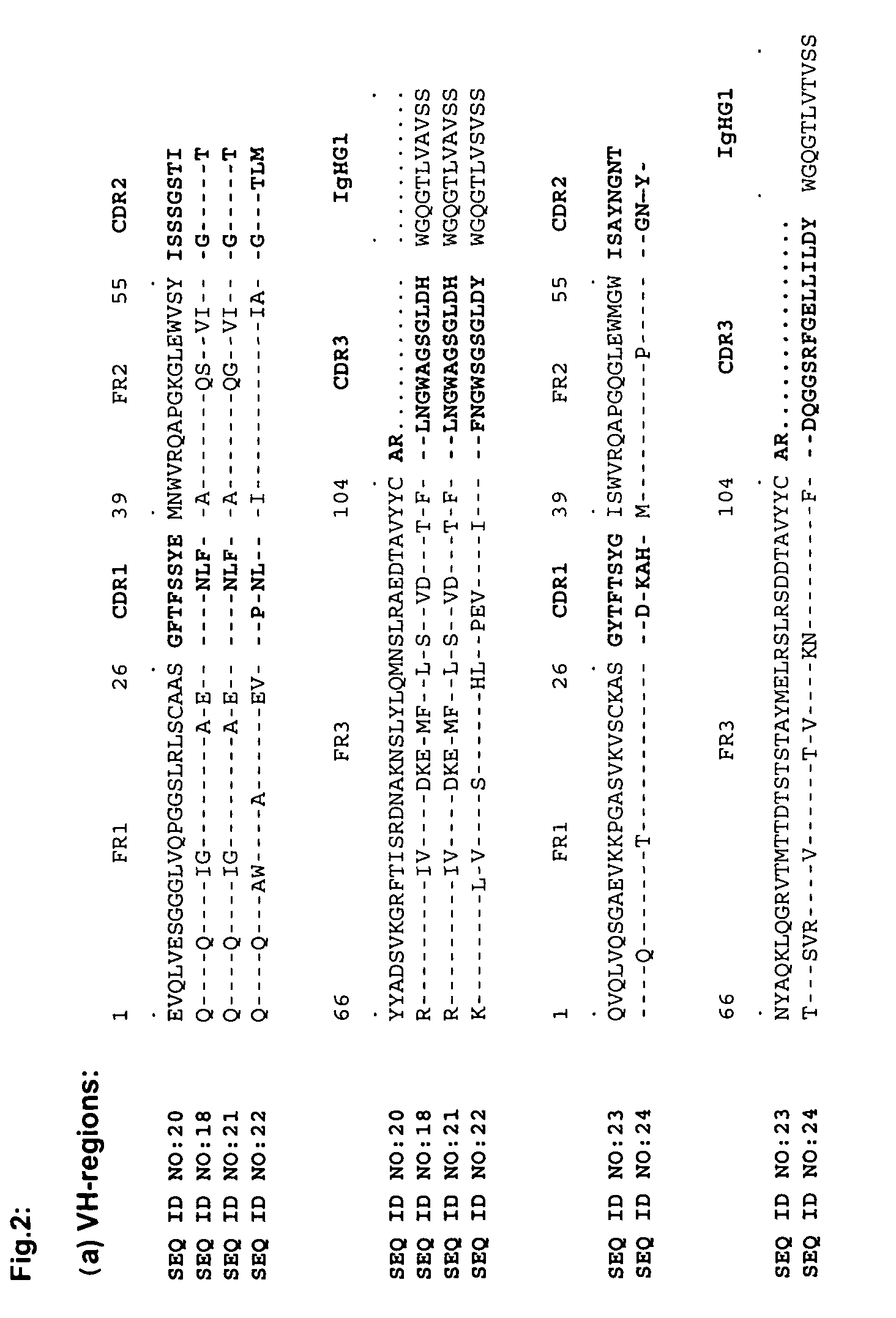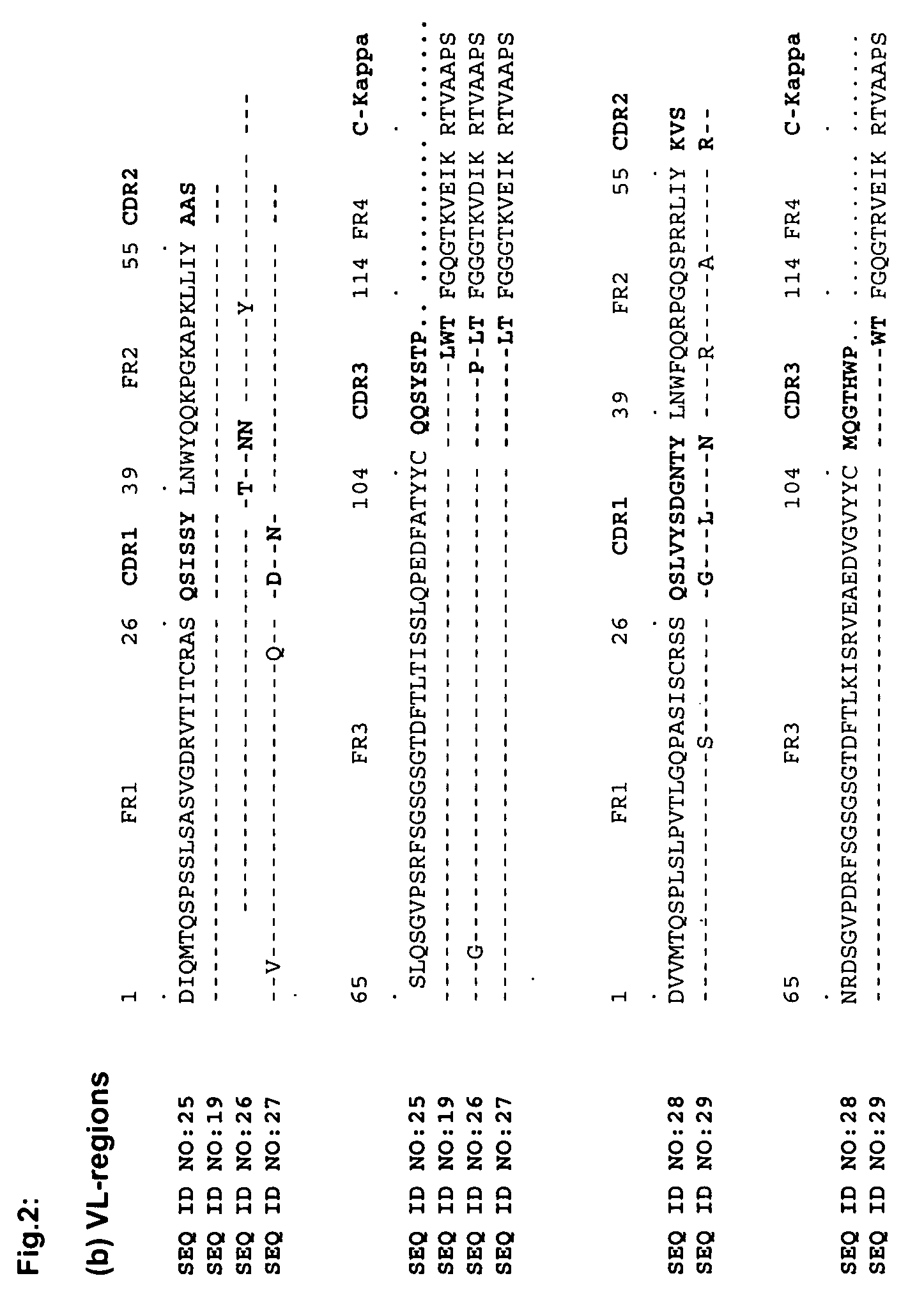Immunoglobulin against Helicobacter pylori
a technology of immunoglobulin and helicobacter pylori, which is applied in the direction of antigen ingredients, snake antigen ingredients, botany apparatus and processes, etc., can solve the problems of loss of function, high recombination rate of i>h. pylori/i>, and difficult active vaccination against i>h. pylori/i>, and achieves effective activation
- Summary
- Abstract
- Description
- Claims
- Application Information
AI Technical Summary
Benefits of technology
Problems solved by technology
Method used
Image
Examples
example 1
Selection of Donors Positive for BabA-Antibodies
[0048]Sera from 36 H. pylori infected Swedish patients were tested for their ability to inhibit binding of radiolabeled Lewis b-HSA conjugate to the H. pylori strain CCUG17875 (17875 / Leb). For easier recovery of a pellet, the bacterial strain 17875 / Leb with an OD of 0.1 was diluted 1:60 with the bacterial strain 17874 which had lost its ability to bind Leb. Serial dilutions of the sera were diluted in blocking buffer (PBS 0.05% Tween 20, 1% BSA) and 50 μl of radioactively labelled Lewis b-HSA conjugate (0.01 ng / μl) were added to a final volume of 500 μl. After addition of 500 μl bacteria, tubes were softly mixed for 17 hours at RT (room temperature). Samples were centrifuged (13 000 g for 13 min) and the radioactivity of the pellet and supernatant was subsequently measured and put in relation to each other, representing the bound and free conjugate. The relative titer of the tested serum was the concentration sufficient to reduce the b...
example 2
cDNA Synthesis and PCR Amplification of Human Variable Regions
[0049]Peripheral blood mononuclear cells (PBMCs) from 10 ml patient's blood were isolated on a Ficoll-gradient and total RNA was extracted using standard protocols (Qiagen, Hilden, Germany). First-strand cDNA was synthesized with an oligo-d(T) primer (Amersham Biosciences, Buckingham, UK) and human variable immunoglobulin genes were PCR-amplified in 50 μl reactions containing 1 μl of the cDNA, 200 μM dNTPs, 5 μl of 10× reaction buffer, 1 U of polymerase (BD-Advantage2, BD Biosciences Clontech, Palo Alto, Calif.) and the appropriate family-based sense and antisense primers (500 nM) with 36 cycles (15 seconds denaturation at 94° C., 30 seconds annealing at 65° C., 30 seconds at 72° C.). The sense and antisense primer have been described elsewhere (Marks, J. D., H. R. Hoogenboom, T. P. Bonnert, J. McCafferty, A. D. Griffiths, and G. Winter. 1991. By-passing immunization. Human antibodies from V-gene libraries displayed on ph...
example 3
Construction of a scFv-Library
[0051]The phagemid vector pSEX81-phOx (Breitling, F., S. Dubel, T. Seehaus, I. Klewinghaus, and M. Little. 1991. A surface expression vector for antibody screening. Gene 104:147-153) was digested with Mlu I / Not I in the presence of calf intestinal phosphatase (CIP) and separated in a 0.7% agarose gel and extracted (Qiagen, Germany). 100 ng of the digested vector was ligated with 10 ng of the purified variable light chains in a final volume of 40 μl with 1 U ligase (Roche) at 16° C. overnight. Plasmid DNA was ethanol precipitated, electroporated in E. coli strain XL1-blue (Stratagene), and bacteria were grown for 1 h in 1 ml SOCmedia (LB containing 0.1 M glucose) to allow recuperation. Bacteria were subsequently plated on SOBGAT plates (0.1 M glucose, 100 μg / ml ampicillin, 12.5 μg / ml tetracycline), and incubated overnight at 37° C. Clones were scraped off and vector DNA isolated with anion exchange chromatography columns (Macherey & Nagel, Germany). For ...
PUM
| Property | Measurement | Unit |
|---|---|---|
| OD | aaaaa | aaaaa |
| volume | aaaaa | aaaaa |
| volume | aaaaa | aaaaa |
Abstract
Description
Claims
Application Information
 Login to View More
Login to View More - R&D
- Intellectual Property
- Life Sciences
- Materials
- Tech Scout
- Unparalleled Data Quality
- Higher Quality Content
- 60% Fewer Hallucinations
Browse by: Latest US Patents, China's latest patents, Technical Efficacy Thesaurus, Application Domain, Technology Topic, Popular Technical Reports.
© 2025 PatSnap. All rights reserved.Legal|Privacy policy|Modern Slavery Act Transparency Statement|Sitemap|About US| Contact US: help@patsnap.com



